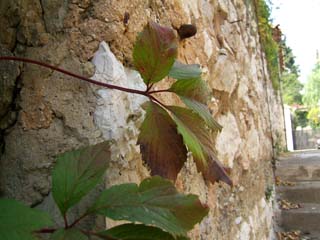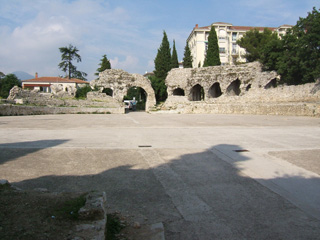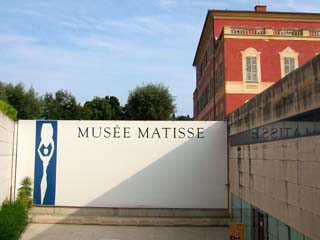
The road to the Matisse museum starts very close to
the MAMAC (Museum of Art Modern and Art Contemporary) in Nice. My
assumption in looking at the map was that I could park at MAMAC and
walk. It turned out to be about 3 kilometers--Uphill!
Still, along the way I took a lot of pictures and even spoke to a
couple of French people (to ask, or oddly to give, directions). I
am resolved to accept whatever discoveries my situation demands.
You don't feel like you are lost if everything you find is interesting
and you weren't really sure what you were looking for in the first
place. One happy discovery was this
"Virginia Creeper" vine growing along a
stairway that served as a shortcut between switchbacks of the steep
road. An unexpected place to find a Virginian.



Finally, I reached the Matisse museum which is in a
Genoese-Italian styled villa and a recently (1993) added annex. I
was lucky that they were having a special presentation of Matisse's
sculpture that included some 79 separate works (The receptionist
claimed this represented all
of his
sculpture). The most informative
was his Jeanette series (I - V) where he started with a fairly
realistic bust and abstracted it in each of the
following versions (through a process that I associate with Brancussi
who was famous for this during the decades just previous to
Matisse's effort.) Matisse gradually and deliberately exaggerated
and
made more primitive his gestures until the final piece of the series is
almost a
caricature of the original. Matisse's son also followed
this series with one marble piece that is even
more Brancussi-like in that it erases all of the woman's
features and reduces what is left to a series of geometric forms.
Matisse spent his final years in Cimiez and is
buried in monastery nearby. The museum contains many personal
items from
his old age. I was interested to see some of the artifacts that
he
had collected and which inspired him such as African statuary,
tapestries from India (which looked very much like some of his work),
oriental pieces, etceteras. To me, the art of the late nineteenth
and early twentieth centuries reflects the shrinking of the world as
travel became more practical. I would argue that a lot of early
efforts in abstraction follow the art of African, Latin American, and
Asian traditions. Even the various efforts at modern realism are
often
presented as an escape from the self-awareness that is afforded by
travel away far enough to see oneself. Matisse, more than most,
embraced
these new cultures and their aesthetics so that, like a spice trader,
he fed them to the Europeans in a form they could
appreciate.